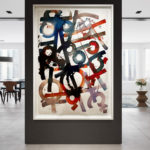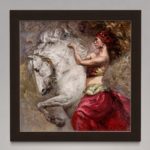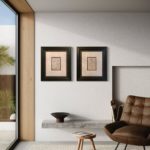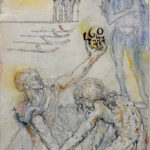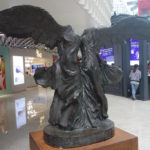Tomasz Rut (Polish, b. 1961)
“Ne Plus Ultra”
oil on canvas. Circa 2005,
46″ x 34″
Certificate from Park West Gallery (2006)
PRICE: $29,950.
Tomasz Rut (pronounced root) was born in 1961 and raised in Warsaw, Poland, the son of an Olympic athlete father and artist mother who together encouraged a love of art and the classics. During his childhood Rut was introduced to the Pompeiien Frescos as well as Renaissance and Baroque art, which have influenced his oils on canvas, murals, and graphic works. Rut had his first showing in Warsaw at the age of eleven. Trained in Art Conservation at the Academy of Fine Arts in Warsaw, Rut continued his education in New York City at the Pratt Institute in Brooklyn and at Columbia University in Manhattan. He eventually took a job in art conservation for the Biltmore House in Asheville, North Carolina, traveling the east coast restoring large scale murals in museums and mansions for such clients as the Smithsonian Institution and the U.S. Treasury Department in Washington, DC, the New Jersey State House in Trenton, the Gusman Center for the Arts and Vizcaya Museum in Miami.[4]
It was during these travels he began to notice the void of figurative paintings from the past that one could purchase, so Rut invented a style aimed at filling this void. This style incorporated cracked canvasses that mimic aged Italian frescoes and figurative oils. “The one element evident in all of my paintings is the superficial patina or aging,” which is created with a variety of transparent and semitransparent glazes, giving each work the aged and classic appearance that exemplifies Rut’s style.[4]
“Rut’s mural size paintings are contemporary conversions of the classical vocabulary variously continued by Michelangelo, Raphael, Titian, and Rubens. In making them he returns to antiquity by a double detour. First, he sets in motion the charming unreal apparatus of the Quattrocento mise-en-scene, and more importantly its heroic nudity, vigorous modeling, expressive anatomic structure, powerful movement and fascinating physiognomy. Tinged with sadness, his super-human youths play once more on Arcadian pipes (i.e. pan flute) – a motif also reprised by Matisse. Alternatively, he offers us impossible delicate, gracile females-‘still unravished bride(s) of quietness’-delimiting them with sylvan togas and braided tresses. Nor does he leave rearing steeds, which in the grand manner represent humanity’s turbulent passions.” ~Dorothy Keane-White, Art Curator & Director for Northwood University.
The subjects of Rut’s paintings, whether a figure, horse, or object, is at the center of every work, surrounded by compressed space with few background details to distract from the subject.



